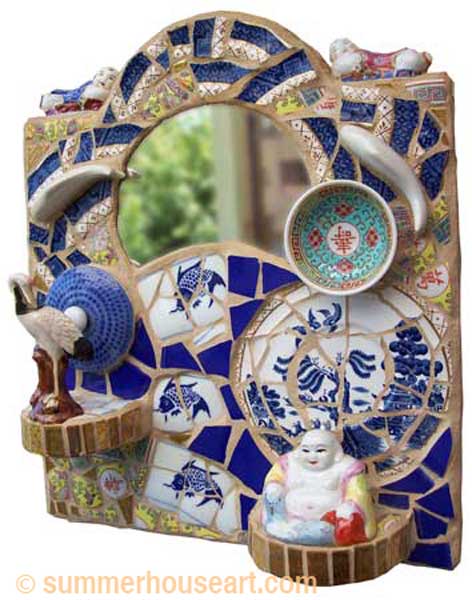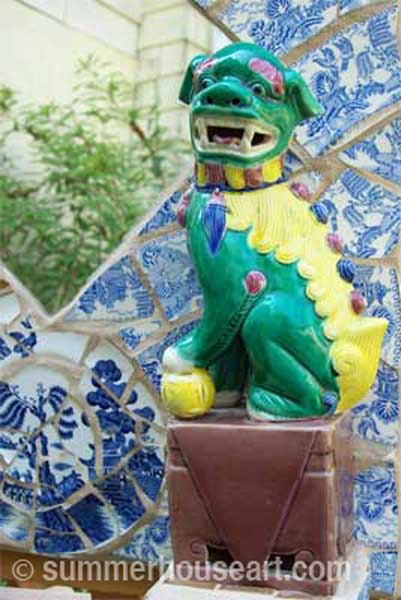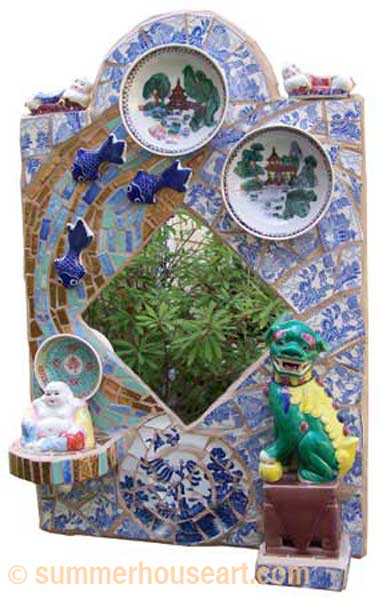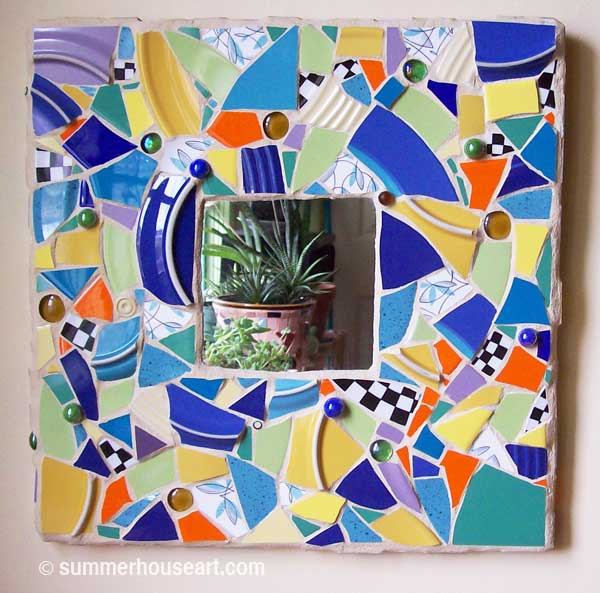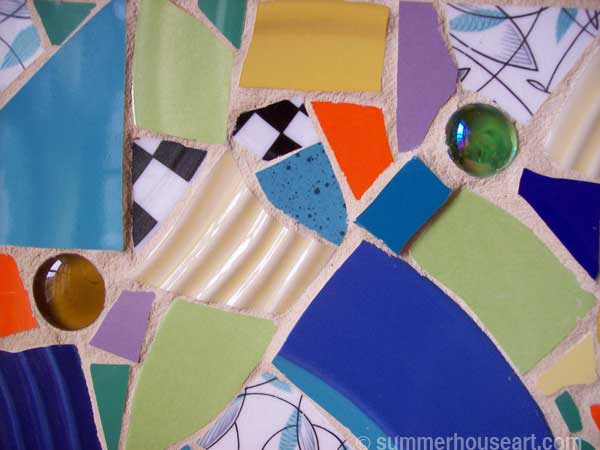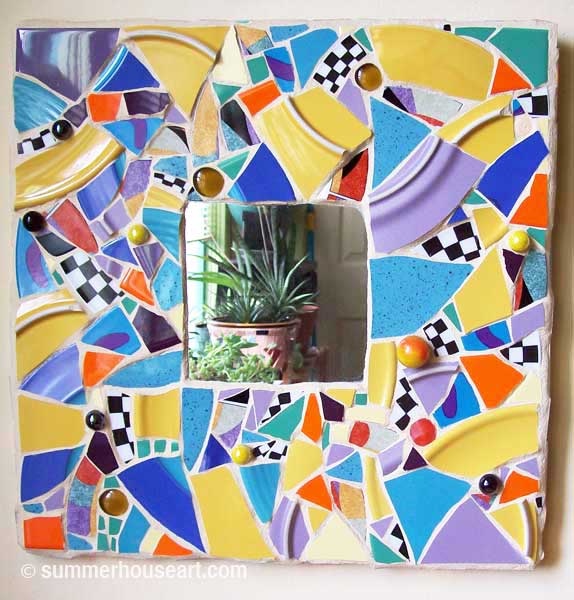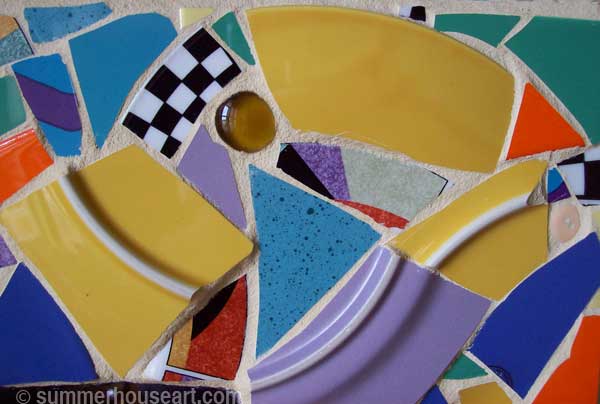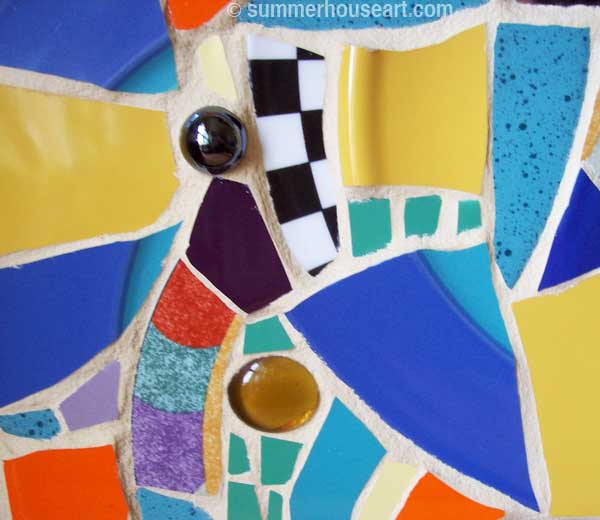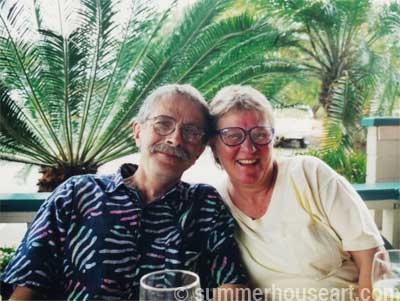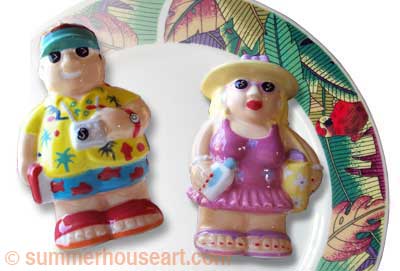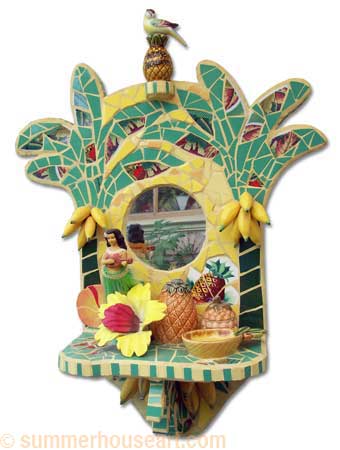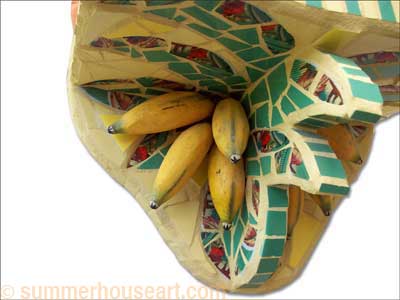I like to dabble in all sorts of things, like to shake up my thinking a bit. Feng Shui was one of those interests that I took up for a time and I even incorporated some of its ideas into my home here and there. For instance the far corner of the greenhouse, the “wealth corner”, is full of Jade plants, or money plants. There are other little touches throughout the house too. And I admit that keeping the Chi flowing is a good reason to tidy up. But for an old hippie like me, there are just too many rules to Feng Shui, so I just picked up a few that I liked.
When I found the Foo Dog or Lion at a flea market, I knew I just had to do another Oriental Shrine pique assiette mosaic and I wanted to incorporate a bit of Feng Shui too. I’d already done a small shrine incorporating a couple of Blue Willow porcelain saucers, some chopstick rests, a little Buddha and a stork figurine. Pique Assiette mosaics, by the way, are a type of mosaic quite different from the usual mosaic made with tesserae, because of the use of the dishes and ornaments.
I’d been trying to cut a round mirror when it just cracked on its own in this wonderful semi-moon shape. Well, something like that cannot be wasted! The shape of that mirror dictated the shape of the shrine and created the shoulders to put the little chopstick rests on. Everything just flowed together.
Where did I get almost all of these wonderful ingredients for the shrine? Well, here in Victoria, we have the most wonderful Chinatown ever. I love shopping in Chinatown, especially in a hidden little alley called Fan Tan Alley which is just too much fun to prowl.
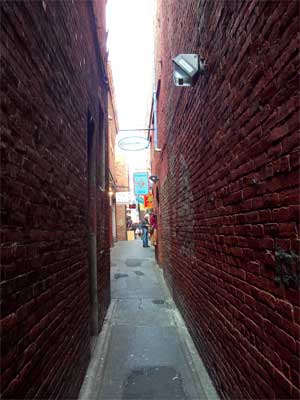
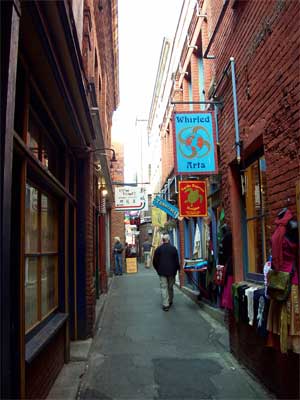
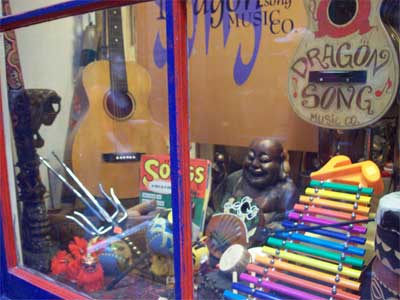
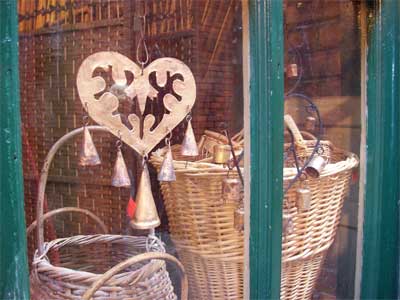
Now, with the find of the Foo dog, again things that I needed just seemed to fall into my lap. The background was made from some really good, antique Blue Willow dishes, given to me by an antique dealer friend of Eric’s. They were chipped and perfect for breaking. And break they did, like butter! So easy to cut and shape.
More chopstick rests and another little Buddha were found on a trip to Chinatown. Any excuse to go there will do, after all. Other oriental saucers were found in Value Village and before I knew it, the piece was ready to start.
But this time I wanted to incorporate some Chi into the design. Chi is a flow of energy in Feng Shui . For that I wanted a water flow, so I created a little “golden river” for the fish to swim in, that led to the serene Buddha. The Foo Dog or Lion was at the gate to protect the Buddha and would keep the “Blue Willow garden” tranquil.
And so Feng Shui, with a nod to tranquility, Chi, and the garden became a design element in this little shrine.
